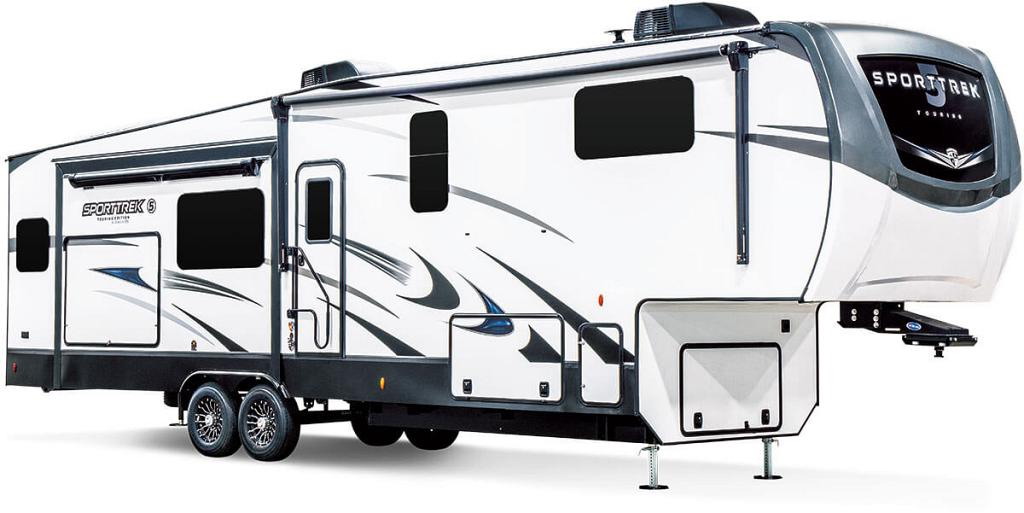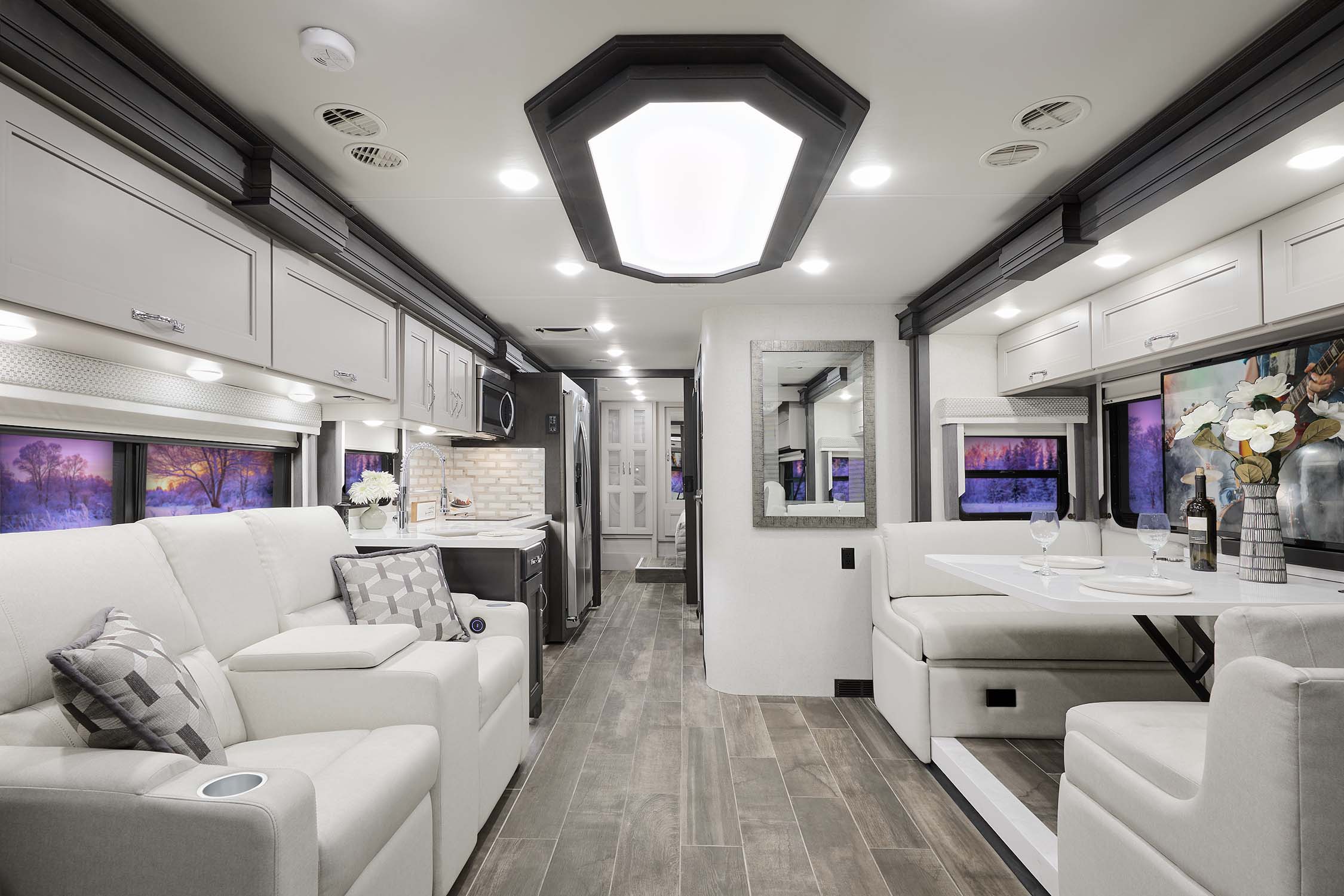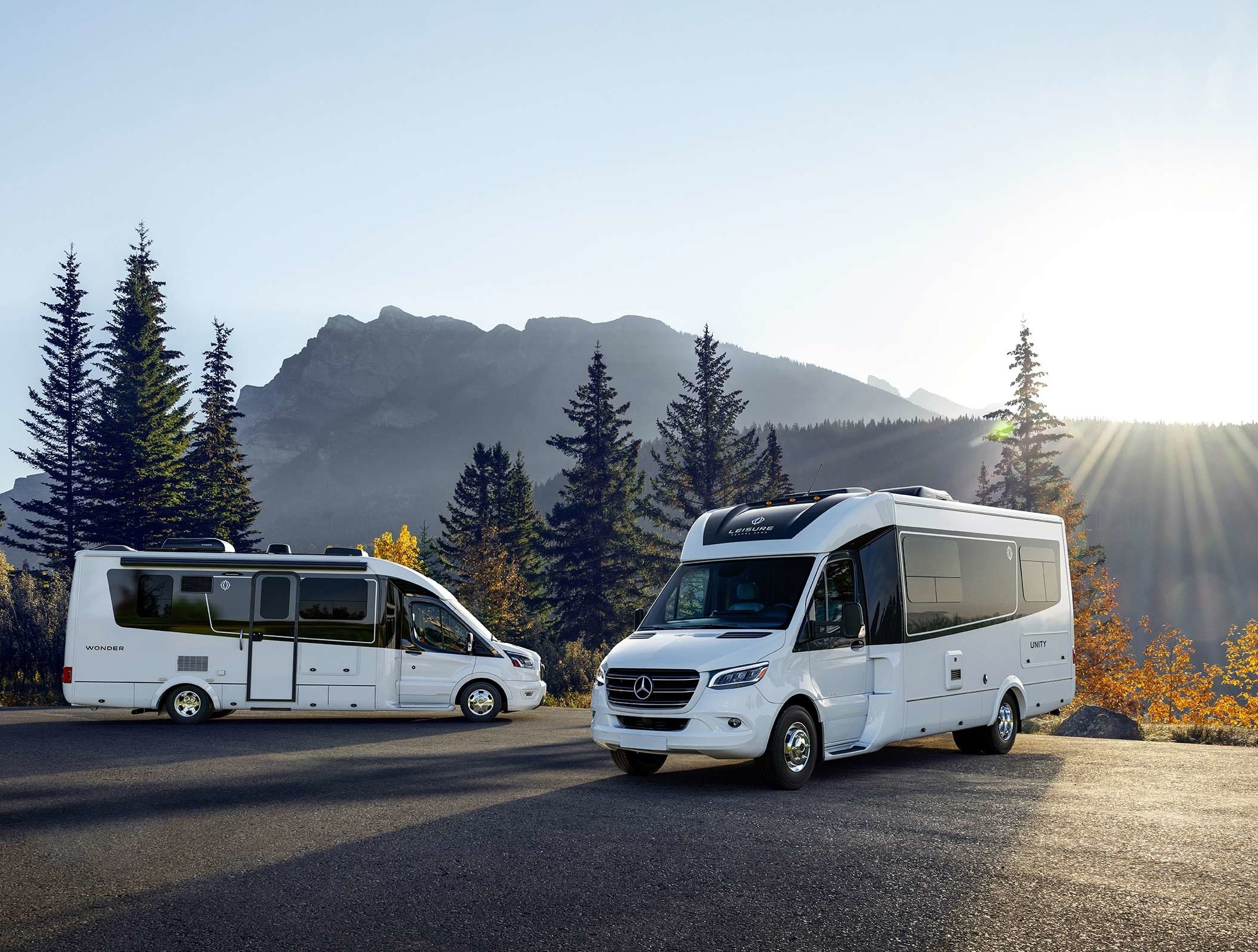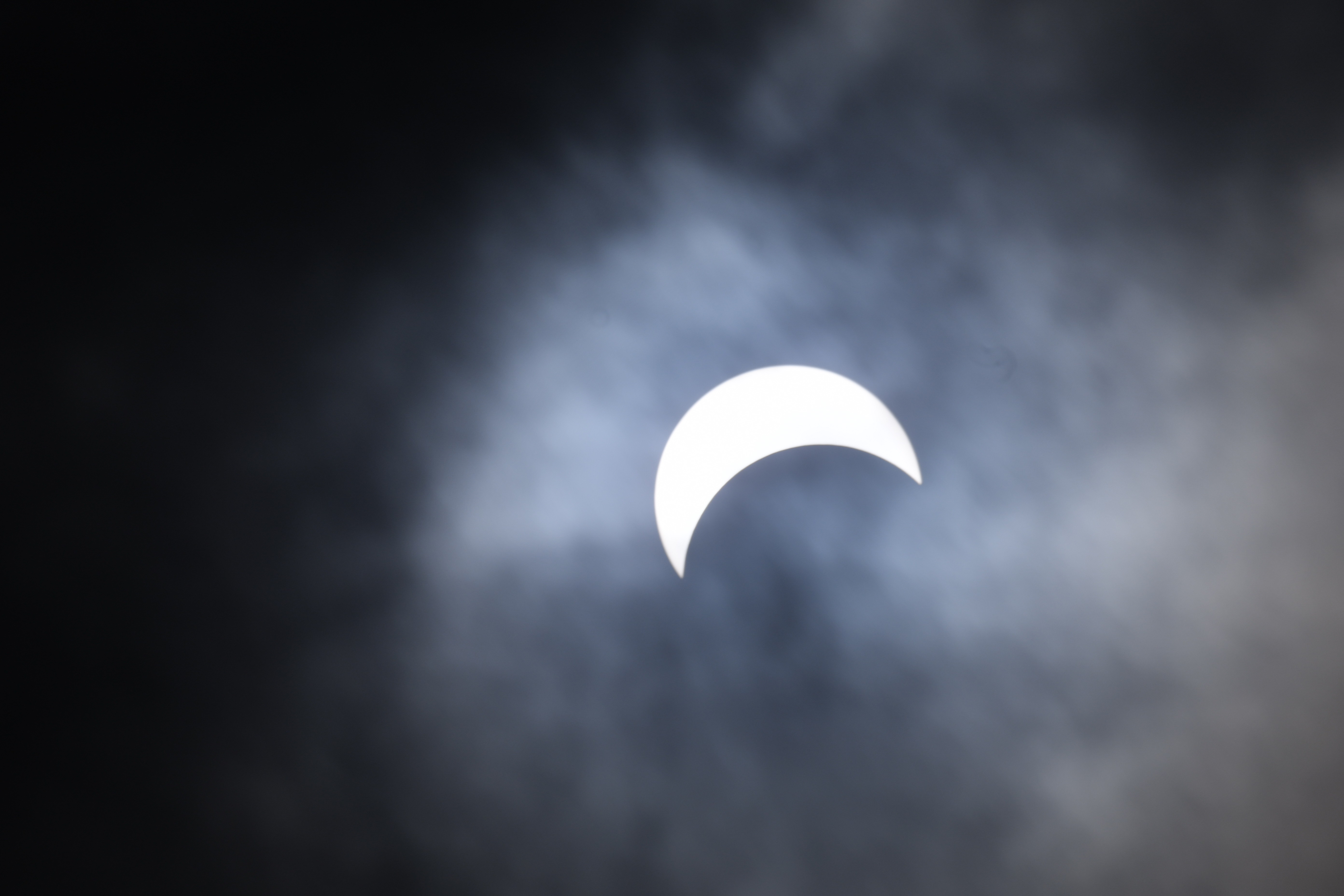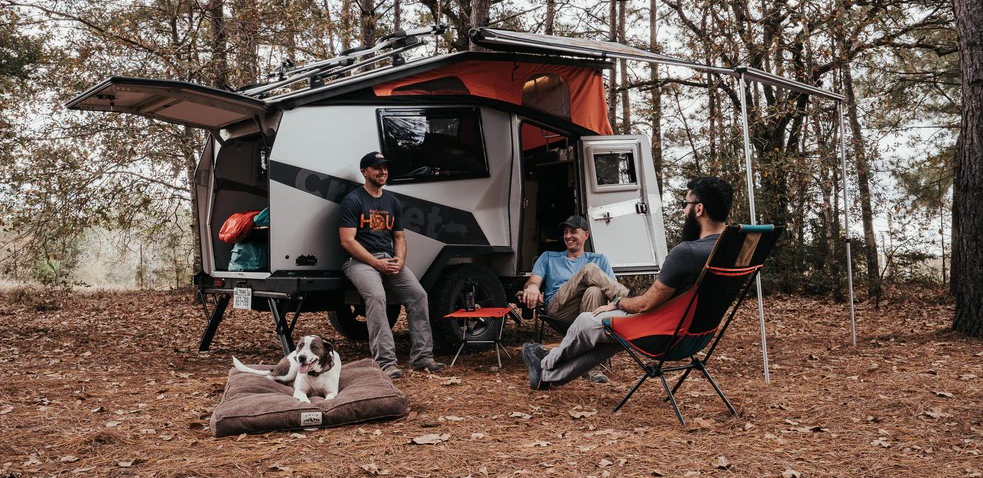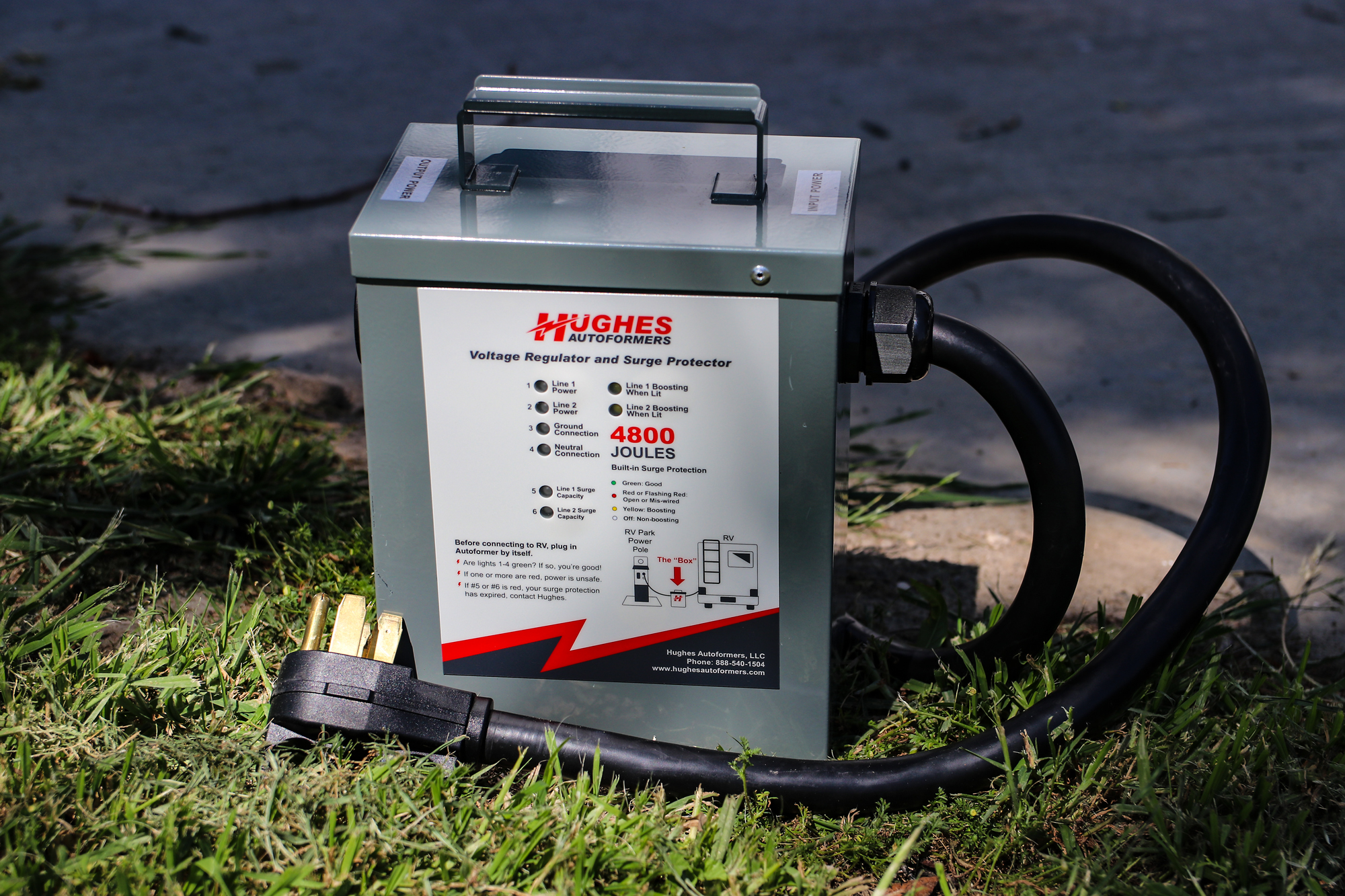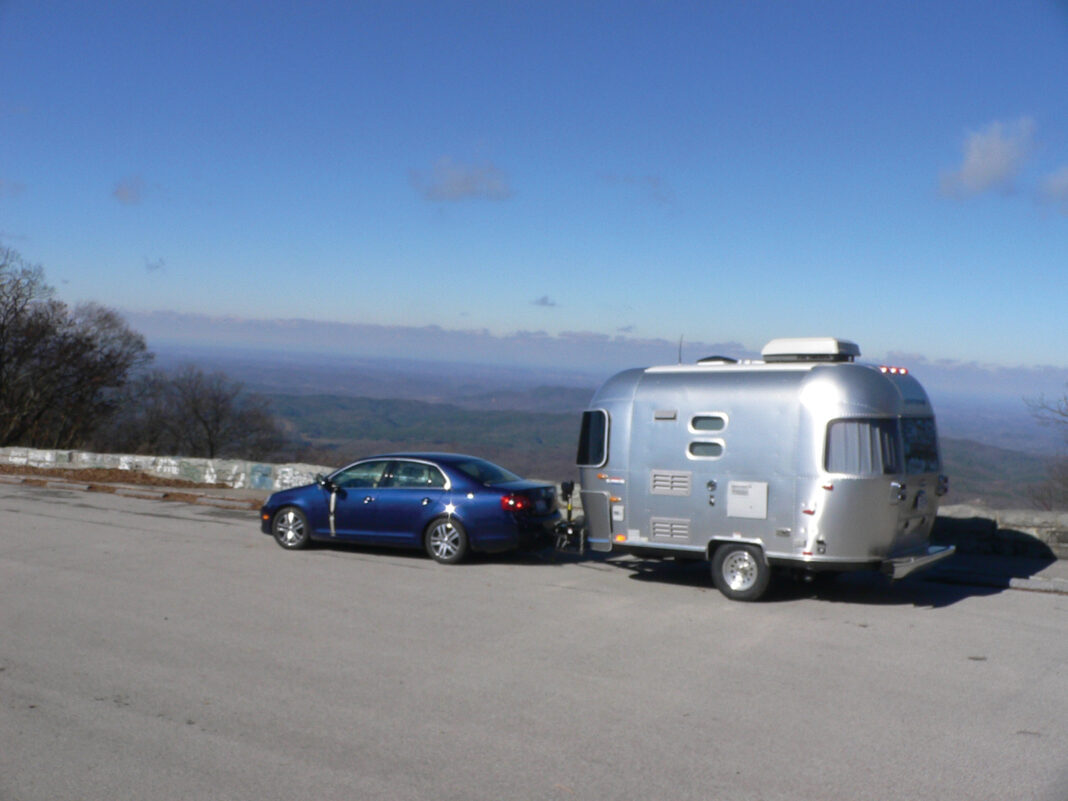By Andy Thomson
Several years ago, we took a 4,200 kilometer trip through Europe. I was surprised to see that there were far more trailers on the road than there are here in North America. Most of the trailers we saw were 20-24’ long and most were being towed by four cylinder cars.
Obviously, the European RV market has adapted to the fuel situation, and the prevailing trends in family transportation. Trailers in Europe are very light, with good suspensions. European RV manufacturers neither understand nor use equalizing hitches, and believe it or not, they still use mechanical brakes. The four cylinder cars were cruising without difficulty at highway speeds, and they seemed to be handling the aerodynamic drag of their trailers without a problem. Even more interesting was the observation that the RV enthusiasts we encountered were towing on roads that were generally more challenging than ours.
The North American Perspective
Over the years, we have set up plenty of four cylinder tow cars, starting with Volvos in the mid-1970s, but until a few years ago we had never actually toured to any great extent with the smaller engine options and lightweight trailers. Following our European adventure, we decided to add a four cylinder tow vehicle to our corporate fleet, and we started out with two vehicles in our fleet that had very different personalities, but towed suitable trailers very nicely.
The first of our four cylinder tow vehicles was a 2005 PT Cruiser convertible, which we used to tow lightweight 7.5’ wide aerodynamic trailers and Airstreams up to 22’ long. The PT Cruiser had a turbocharged 2.4 litre four cylinder engine and the same transaxle as the one used in Chrysler vans with V-6 engines, so it had plenty of extra capacity.
There are a few special considerations to keep in mind when towing with high output small displacement engines. When towing with a turbocharged engine, it is important not to operate the engine under boost for long periods of time. It is fine for entering an expressway or passing slower traffic, but not to climb a five mile mountain pass or drive all day at the speed limit, into a strong headwind.
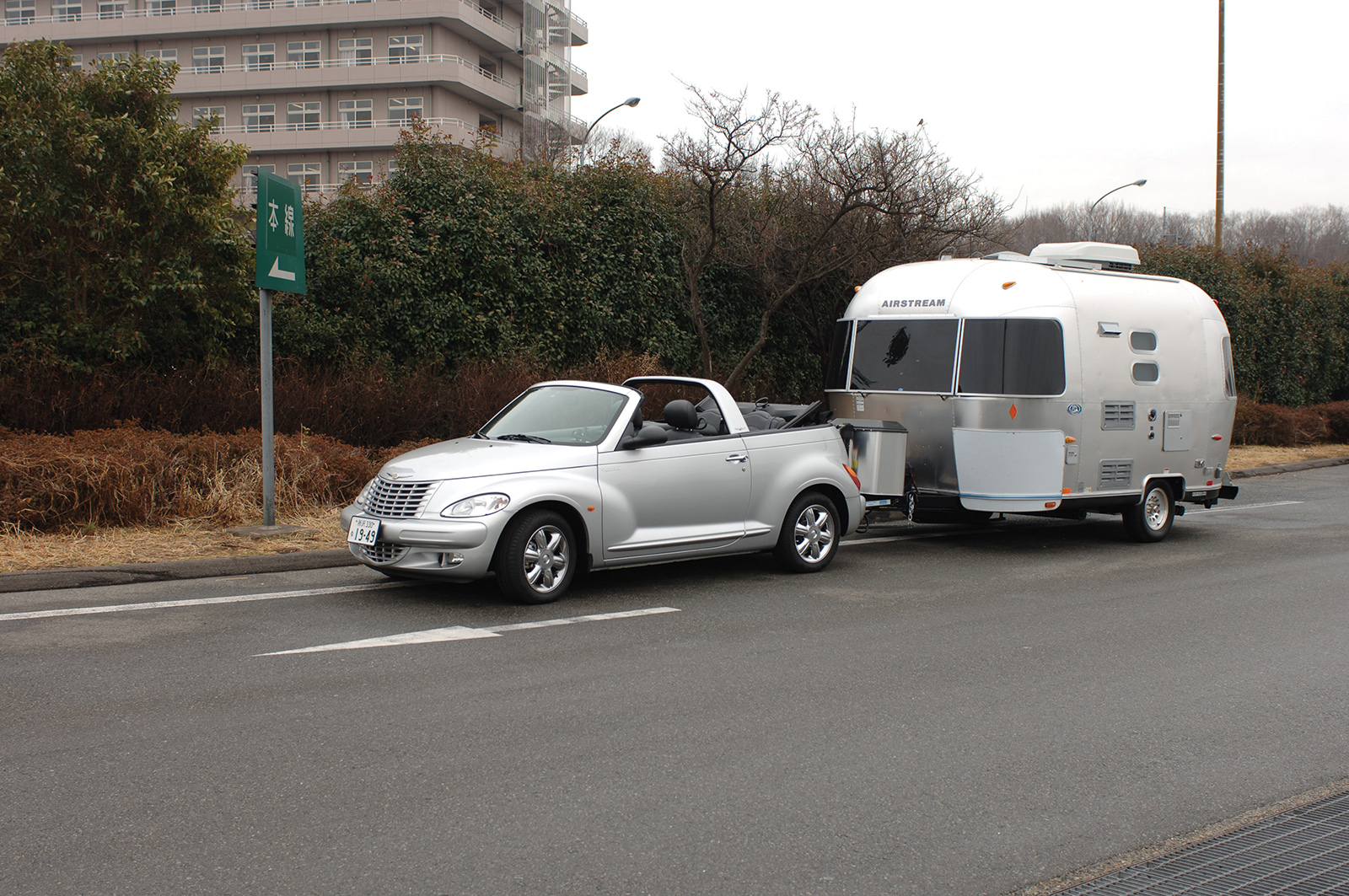
To prep the PT for towing we added a transmission cooler, a vacuum gauge to measure boost, and the hitch and wiring. There was not enough room under the back of the car for both a solid hitch and a spare tire. Fortunately, the spare fit easily in the trunk with plenty of room left over. The body structure was surprisingly strong for a convertible and easily handled the torque from the 550lb. torsion bars.
The PT Cruiser had what would seem to be a short 103” wheelbase, but the rear overhang was only 37”, or 36% of the wheelbase. The rack and pinion steering was very precise, and the 205/55HR x 16” tires had virtually no side sway. At highway speed with the Airstream the combination was rock solid and passing trucks and cross winds had no effect on handling. The lightweight trailers were barely affected by passing trucks or cross winds, however there was some buffeting when following a transport.
Performance with the PT Cruiser was excellent and few RV combinations were as much fun to drive. 0-100 KPH took only 23 seconds with a 19’ Airstream. As you might guess, maneuverability was excellent, and you could easily whip in and out of tight spaces. We put more than 60,000 kilometers on the PT while it was in our fleet, with 16,000 of that logged while towing trailers. It was completely reliable and never had a warranty claim. While solo fuel efficiency was quite good, towing with the PT Cruiser produced mileage data not much different than a larger tow vehicle. Towing an Airstream at 100 KPH the PT Cruiser delivered 16.4 miles to the Imperial gallon or 17.2 L/100km.
If you are looking for an economical day to day vehicle that can tow a small trailer for your annual vacation there are many good choices today, including new and used vehicles. I have fond memories of that PT Cruiser – it was the only convertible available that could carry four adults comfortably. The sedan version offered more interior space than many small SUVs and was quite reasonably priced.
Diesels tow well…
In recent years, the most efficient tow vehicles for travel trailers and smaller fifth wheels have been powered by very efficient, high-torque small displacement diesels. Several years ago, we decided it would make sense to gain some experience with these new diesels. At the time, the only modern diesel available in North America was in the VW Jetta. Our Jetta diesel was mated to a 5-speed manual transmission. We logged more than 13,000 kilometers while towing 25’ and shorter Airstreams as well as a range of aerodynamic lightweight trailers less than 26’ long. We used our Jetta to tow new trailers from the factories back to our dealership. The fuel economy was amazing: 50 – 55 MPG is very easy to attain on a solo highway trip. Towing Airstreams, the Jetta ran easily at 27-32 MPG, and we regularly logged 24-28 MPG when towing the conventional lightweight trailers. While the Jetta easily handled 22’ Airstreams and lightweights, we would not recommend a small diesel powered vehicle for towing trailers this large over mountainous terrain. Like all diesels, the acceleration was not blistering, but the torque pulled steadily and once up to speed it held it easily. Amazingly it towed in fifth gear most of the time.
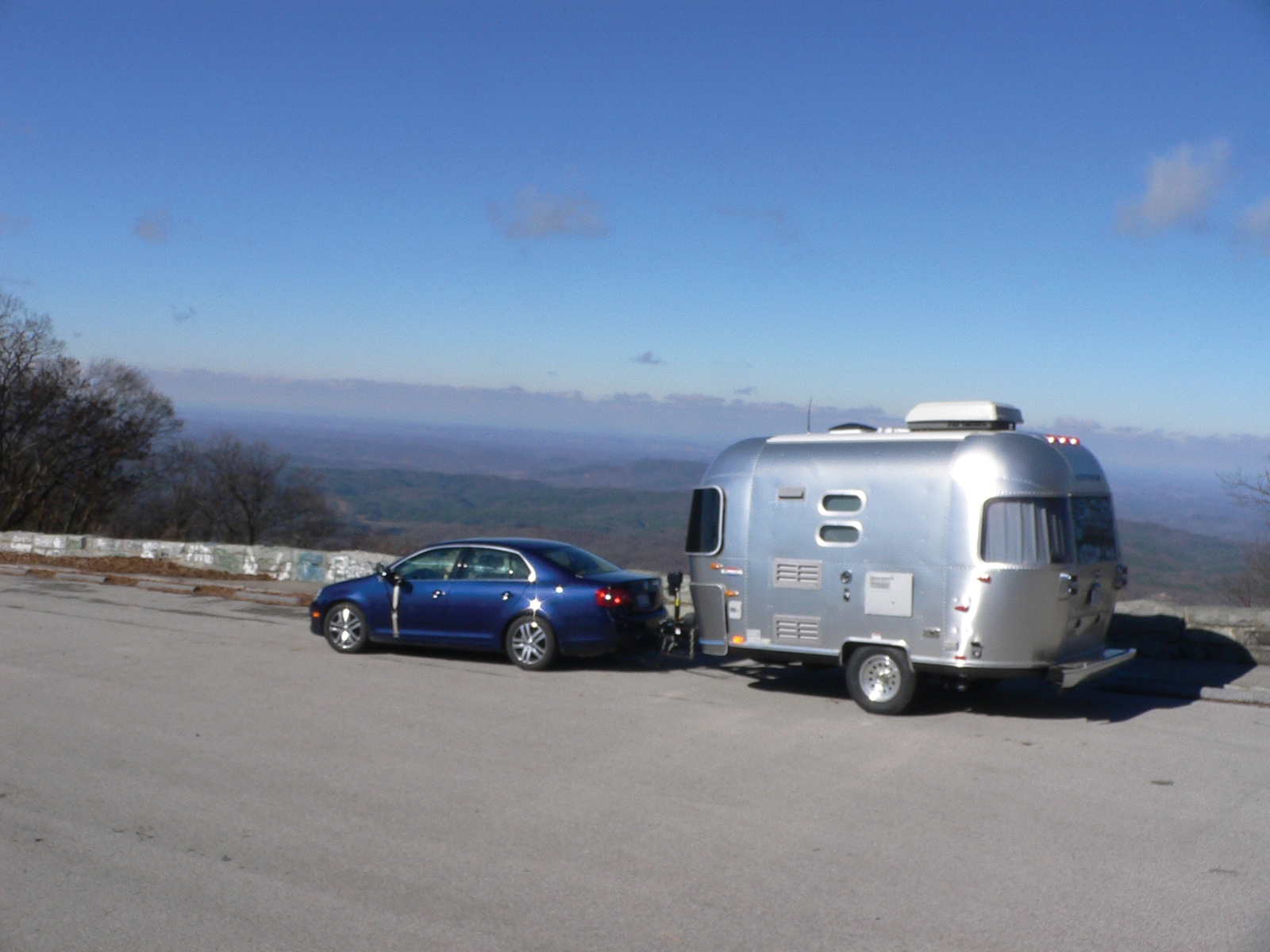
When I mention that we were towing with a Jetta Diesel, the first assumption is that it is a very small car to be towing with. Most people don’t realize that the Jetta grew up a couple of years ago, and it is now a far more substantial vehicle with independent rear suspension. As well, the Diesel engine grew to 1.9 litres with 100 HP and 177 lbs ft of torque at just 1600 RPM.
The Jetta’s wheelbase was 101.5” and the rear overhang was 45”, or 44% of the wheelbase. This is more of an overhang that we would normally like, but combined with the independent suspension and the very tight tire and wheel combination it handled very well. It was not quite as stable and aggressive handling as the PT Cruiser, but if you did not do the direct comparison you would find it excellent. The ride was neither harsh nor soft, just a nice balance. The Jetta was a comfortable car to drive long distances – it was also very quiet, with the diesel only noticeable during cold starts.
Interestingly, in Europe, where they don’t use equalizing hitches and unbelievably still use mechanical trailer brakes, the Jetta had a 3000 lb. towing recommendation. In North America it was rated at only 1000 lbs., likely because they don’t see the towing capability as a marketing advantage. We were able to install a very solid hitch platform on the Jetta that reached forward of the rear wheels, we used a 550lb. Eaz-Lift hitch with a welded ball mount.
The next wave of tow vehicles…
Hybrid cars have been getting a lot of attention lately, and EV options are very viable – and will become much more practical as battery capacities increase the touring range. We have been towing with Tesla sedans since 2018.
As far as internal combustion engines are concerned, the TDI engines deliver fantastic economy and performance, and they have a long track record, lasting hundreds of thousands of kilometers. It will take a lot of driving to offset the additional cost, but the payback will no doubt be there.
If you would like to try any of these unusual tow vehicles in a real-life situation we have a fleet of interesting models available for test drives at Can-Am RV Centre. Simply call ahead to ensure they are not off on a trip to pick up another new lightweight trailer!






